In a world dominated by full-suspension mountain bikes and plush gravel rigs, rigid frames and forks might seem outdated. Yet, for many riders and disciplines, rigid suspension (i.e., no suspension at all) offers compelling advantages. Here’s why going rigid could transform your ride:
1. Unmatched Efficiency:
Every bump absorbed by suspension saps pedaling energy. Rigid bikes convert 100% of your power into forward motion. This makes them ideal for climbing, smooth trails, gravel roads, or urban commuting where speed and efficiency trump impact absorption.
2. Lighter Weight:
Eliminating shocks, springs, and pivots slashes weight significantly. A lighter bike accelerates faster, feels nimbler, and is easier to carry – a major perk for bikepacking, cyclocross, or long-distance riders.
3. Lower Maintenance & Cost:
No suspension means no seals to service, no air springs to tune, and no pivot bearings to replace. Rigid setups are simpler, cheaper to buy/maintain, and less prone to mechanical issues on long adventures.
4. Enhanced Direct Feel & Control:
Experience unparalleled connection to the trail. Rigid bikes offer instant feedback through the bars and saddle, allowing precise line choice, sharper cornering, and improved bike handling skills. You feel the terrain, fostering greater rider engagement.
5. Increased Frame Stiffness & Compatibility:
Without suspension constraints, frames can be designed for optimal stiffness and weight distribution. Rigid forks also simplify compatibility with any wheel size, tire width, or braking system (rim or disc).
6. Better Power Transfer:
No suspension bob means power surges – sprints or steep climbs – transfer directly to the rear wheel without energy loss. This responsive feel is cherished by racers and performance-focused riders.
Where Rigid Reigns Supreme:
Gravel & Road Riding: Efficiency and speed rule.
Smooth Singletrack/Hardpack: Where precision trumps plushness.
Commuting/Touring: Reliability and low maintenance win.
Cyclocross: Lightweight agility is critical.
Bikepacking: Weight savings and durability matter most.
The Trade-Off:
Rigid isn't for everyone. On technical, rocky, or rooty terrain, suspension smooths impacts and reduces fatigue. Your hands, arms, and back absorb more vibration.
Maximizing Rigid Comfort:
Wider Tires: Run lower pressures (within safe limits) for natural cushioning.
Compliance Tuning: Look for carbon forks/frames designed to flex subtly.
Eronomic Touchpoints: Quality grips, a supportive saddle, and padded gloves help.
The Verdict:
Rigid suspension champions purity, efficiency, and connection. It rewards skilled riders with lightning-fast responses and liberates you from complex maintenance. If your terrain allows, embracing rigidity means rediscovering the joy of direct control and unadulterated speed. It’s not about rejecting suspension; it’s about choosing the right tool for your ride.
Ready to simplify? A rigid bike might redefine "smooth" for you.
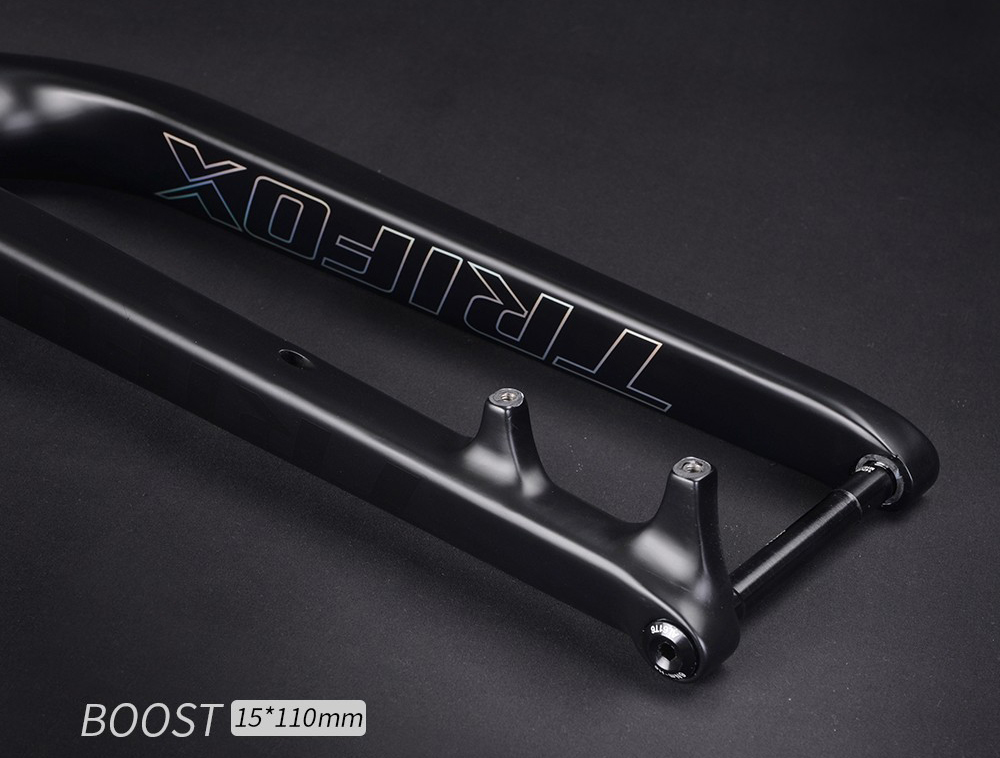

That frustrating moment: you've got a shiny new seatpost clamp, ready to eliminate seat slippage once and for all... only to find it doesn't fit your frame. Don't worry, you're not alone! Choosing the right seat clamp size is crucial, and thankfully, it boils down to one key measurement: your bike frame's seat tube outer diameter.
Why Size Matters:
Seatpost clamps work by tightening around the outside of your frame's seat tube, applying pressure to secure the seatpost inside. If the clamp is too small, it simply won't fit. If it's too large, it won't tighten evenly or effectively, potentially leading to:
- Persistent Slipping: Your seatpost gradually sinks during rides.
- Frame Damage: Uneven pressure can crush or distort thin-walled seat tubes, especially on carbon frames.
- Clamp Failure: Over-tightening a too-large clamp to compensate can strip bolts or break the band.
Finding Your Magic Number (in millimeters):
Here's how to find your frame's seat tube outer diameter:
1. The Gold Standard: Calipers: Digital or Vernier calipers give the most accurate reading. Measure the outer diameter of the seat tube near the top, where the clamp sits. Avoid measuring over decals or thick paint layers.
2. Check Existing Clamp: If your current clamp works, it likely has the size stamped or engraved on the inside of the band (e.g., "31.8", "34.9", "36.4").
3. Frame Sticker/Model Info: Some manufacturers print the seat tube diameter on a frame sticker near the bottom bracket or include it in the online specs for your bike model.
4. Manufacturer's Website: Look up your specific bike model year specs – the seat clamp size is often listed.
5. Common Sizes (But MEASURE to Confirm!):
- Road Bikes: Often 28.6mm, 31.8mm, or 34.9mm.
- Mountain Bikes: Common sizes include 30.0mm, 31.8mm, 34.9mm, 36.4mm, 38.0mm, and 39.8mm.
- Gravel Bikes: Can vary, often overlapping road and MTB sizes (e.g., 31.8mm, 34.9mm).
- Older Steel Bikes: May use sizes like 26.8mm, 27.2mm (seatpost size, clamp is larger!), 28.6mm.
Trifox Bike Alloy Seatpost Clamps: A Great Example
Trifox Bike offers lightweight and durable alloy seatpost clamps (like the one linked: https://www.trifoxbike.com/alloy-seatpost-clamp) in a wide range of precisely sized options – typically 28.6mm, 30.0mm, 31.8mm, 34.9mm, 36.4mm, 38.0mm, and 39.8mm. This variety highlights why knowing your exact measurement is essential! Don't guess; measure your frame first, then select the matching Trifox clamp size.
Installation Tip: Torque It Right!
Once you have the perfect size clamp (e.g., a 34.9mm clamp for a 34.9mm seat tube):
1. Clean the seat tube and clamp contact points.
2. Apply a small amount of carbon or aluminum assembly paste to the seatpost inside the tube (prevents slippage, crucial for carbon posts/frames).
3. Position the clamp with any logos facing forward.
4. Crucially: Tighten the bolt(s) gradually and evenly to the manufacturer's recommended torque setting (usually printed on the clamp or in your bike manual). Over-tightening can damage the frame or clamp. Use a torque wrench if possible.
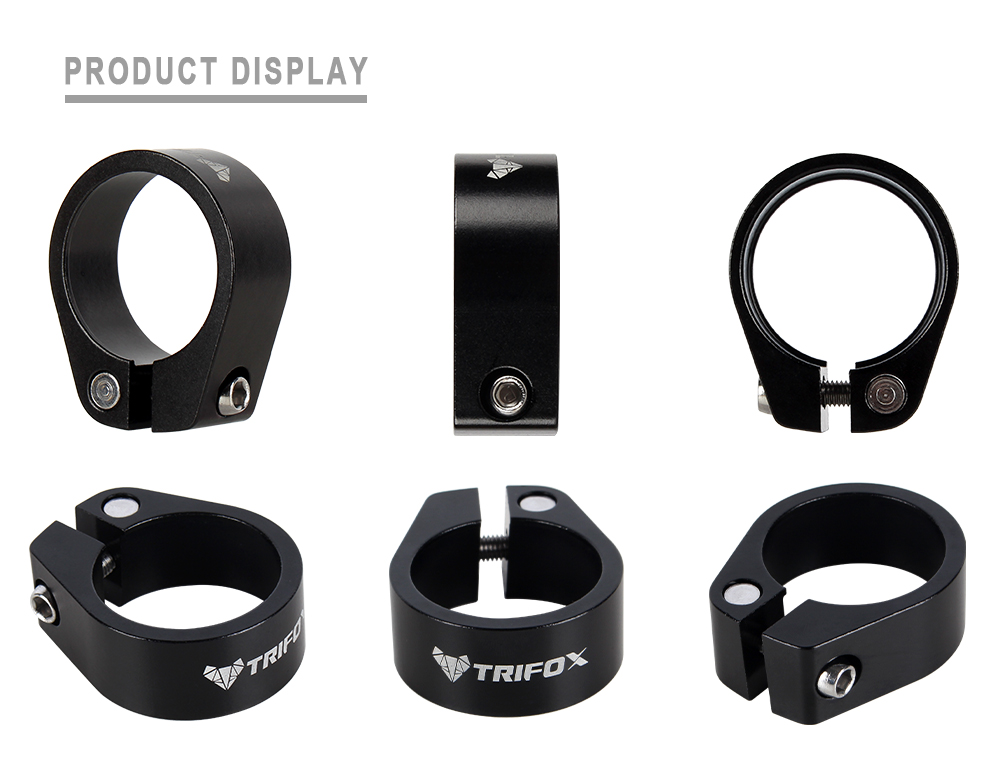
Forget "standard" sizes. Your bike's seat tube outer diameter (OD) dictates the seatpost clamp size you need. Measure accurately using calipers, check your old clamp, or consult your frame specs. Once you know your size (e.g., 31.8mm), choosing a high-quality, correctly sized clamp like those from Trifox Bike ensures a secure, reliable, and damage-free connection, letting you focus on the ride ahead!
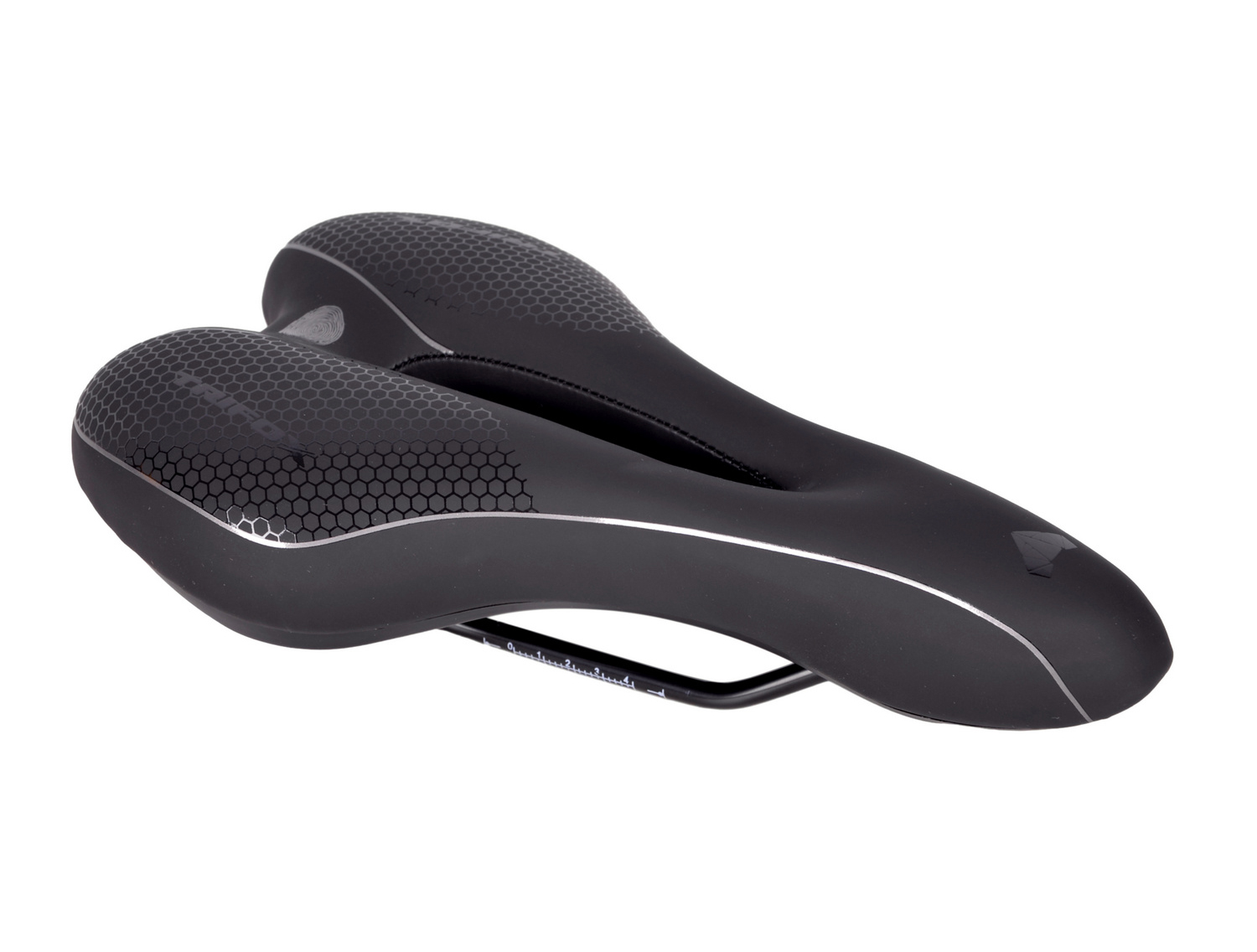
Let's be honest: an uncomfortable saddle can turn the joy of cycling into pure misery. Numbness, chafing, and soreness aren't badges of honor – they're signs you need a better perch! Choosing the right saddle is crucial for pain-free, enjoyable miles. Forget the "toughen up" myth; comfort is king. Here’s how to find yours:
1. Anatomy is Destiny (Especially Gender): Men and women generally have different pelvic bone structures and soft tissue needs. Women's saddles are typically wider at the back with a shorter nose and often a wider central cutout/longer channel. Men's saddles are often narrower. Start by looking at saddles designed for your anatomy. Unisex options exist, but prioritize your specific needs.
2. Riding Position Dictates Shape: How you sit on the bike dramatically impacts pressure points.
Upright (Commuting/Cruising): You sit more squarely on your sit bones ("ischial tuberosities"). Look for a wider, more padded saddle with ample support directly under these bones.
Moderate Lean (Fitness/Gravel): Weight shifts slightly forward. A medium-width saddle with some curvature and moderate padding or a pressure-relief channel is often ideal.
Aggressive Lean (Road Racing/TT): Your pelvis rotates forward, placing more pressure on the soft tissue between your sit bones and pubic arch. Narrower saddles with a distinct curve, minimal padding, and a pronounced channel or cutout are essential to relieve perineal pressure.
3. Measure Your Sit Bones : This is the most important step! Your sit bones need to be properly supported. Many bike shops have simple "assometer" pads you sit on to measure the distance between your sit bones (center-to-center). Add 20-30mm to this measurement – this is generally your ideal saddle width range. Don't guess!
4. Padding: Less is Often More: Thick, soft padding feels great in the shop for 30 seconds, but on a long ride, it compresses, loses support, and can actually cause more chafing and soft tissue pressure. Look for supportive foam or gel strategically placed over the sit bone areas, with firmer bases. Quality materials matter.
5. Pressure Relief is Paramount: Cutouts or elongated channels in the center are designed to reduce pressure on nerves and soft tissue (critical for preventing numbness). If you experience numbness, prioritize saddles with this feature. The size and shape of the relief area vary significantly – try different options.
The Golden Rules:
- Ignore the "Break-In" Myth: A good saddle should feel mostly comfortable on the first few rides. Minor adjustments might happen, but it shouldn't cause significant pain.
- Test Ride is Essential: Reputable shops often have demo saddles or generous return policies. Ride it for at least a few hours over your typical terrain before committing. What feels okay for 10 minutes might be agony at 60.
- Perfect Fit Trumps Brand/Price: The most expensive or popular saddle isn't necessarily your saddle. Focus on the fit fundamentals above.
- Position Matters Too: Ensure your saddle height and fore/aft position are correctly set. Even the perfect saddle won't work if it's poorly positioned.
Finding your perfect saddle takes patience and testing, but the payoff -miles of comfortable, pain-free riding – is absolutely worth the effort. Ditch the discomfort and saddle up for joy!
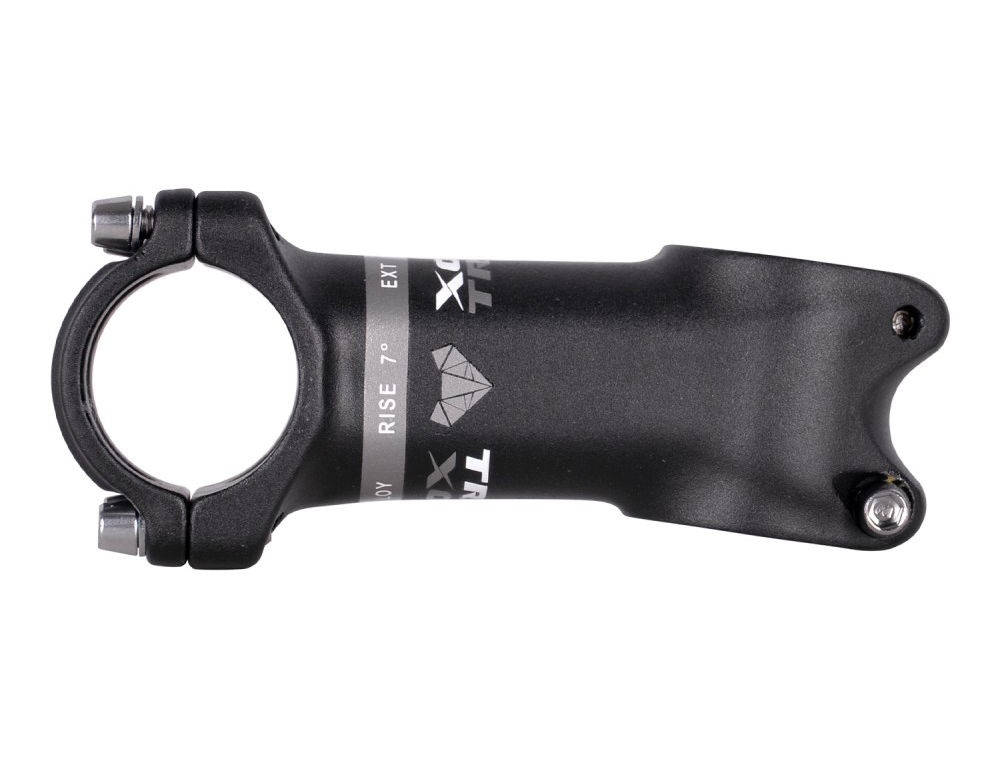
Think your stem is just a boring metal tube connecting your handlebars? Think again! That unassuming component plays a surprisingly pivotal role in your ride's comfort, control, and even efficiency. Yes, your stem makes a significant difference. Here's why:
1. Fit is King: This is the stem's PRIMARY job.
Reach: A stem that's too long forces you to over-stretch, straining your back, shoulders, and neck. Too short, and you're cramped, potentially hurting your knees or feeling twitchy. The right stem length dials in your perfect distance to the bars, promoting a comfortable, powerful, and sustainable position.
Height: A stem's angle (often +/- 6° or 10°) and stack height (via spacers) dramatically impact your handlebar height. A higher stem offers a more upright, relaxed posture (great for comfort, commuting, endurance). A lower stem creates a more aerodynamic, aggressive position (favored for racing or performance). Getting this wrong can lead to numb hands, back pain, or neck strain.
2. Handling & Control:
Stability vs. Agility: Stem length directly influences steering feel. A longer stem provides more stable, slower steering – ideal for descending at speed or loaded touring. A shorter stem makes the steering feel quicker and more responsive, beneficial for tight corners, technical trails (on MTBs), or criterium racing. Changing stem length can subtly (or dramatically) alter how your bike handles.
3. Material Matters (A Bit):
Weight: Stems come in aluminum (most common, affordable, strong), carbon fiber (lighter, can dampen vibration slightly, pricier), and steel/titanium (less common). While weight savings are marginal compared to wheels or frame, every gram counts for some riders.
Stiffness: A stiff stem (often aluminum or high-end carbon) ensures efficient power transfer from your upper body during hard efforts or sprints. Excessively flexy stems feel vague and waste energy. Most modern stems offer sufficient stiffness.
4. The "Performance" Myth (Kinda):
Don't expect swapping stems to suddenly make you significantly faster like aero wheels might. Its performance impact is indirect: enabling an efficient, comfortable position you can hold longer, and providing the right handling for your terrain.
The Crucial Takeaway:
The right stem for YOU makes a massive difference in comfort and control. The wrong stem can make riding miserable or even painful. Changing your stem is one of the most cost-effective ways to dramatically improve bike fit and ride feel.
Before You Swap: Small changes (like 10mm in length or flipping the angle) can have a big effect. If you're experiencing discomfort or handling issues, consult a professional bike fitter. They can determine if a stem change is the solution and recommend the perfect specs for your body and riding style. Don't just guess – get it right and transform your ride!

Crushed seat tube? Slipping post? Using the wrong seat clamp size for your 27.2mm seatpost is a recipe for frustration and potential frame damage.
Get it right for secure, reliable height adjustment. Here’s the simple answer:Your clamp's Inner Diameter (ID) must match your seatpost's Outer Diameter (OD). For a 27.2mm seatpost, you need a clamp with a 27.2mm ID.
Why Size Matters:
Too Big (e.g., 28.6mm clamp on 27.2mm post): You'll crank the bolt excessively trying to grip. This risks crushing a lightweight frame's seat tube or still not preventing slippage.
Too Small (e.g., 27.2mm clamp on 30.9mm post): It simply won't fit over the post or seat tube collar.
Just Right (27.2mm clamp): Distributes clamping force evenly, preventing slippage without damaging your frame or post.
Finding Your Frame's Clamp Size:
Check Existing Clamp: Look for a size marking (e.g., "27.2", "⌀27.2") often stamped/engraved on the underside.
Measure the Seatpost: Use calipers! This is the most reliable method. Measure the smooth section that inserts into the frame – it must be 27.2mm.
Consult Frame Specs: Check the manufacturer's website or original documentation for the seatpost diameter (which dictates clamp ID).
Key Considerations:
Frame Material: Carbon frames are especially sensitive to overtightening. Use a correctly sized clamp and a torque wrench!
Clamp Material: Lightweight alloy clamps (like many from Trifox Bike) offer great strength and weight savings. Avoid overtightening cheap alloy.
Shims: If your frame's seat tube is larger (common on some steel/aluminum frames), you need a shim between the tube and the clamp. The clamp ID still matches your seatpost OD (27.2mm). The shim adapts the larger frame tube to the clamp.
Torque: Always follow manufacturer specs. Tighten gradually and evenly.
Ready for a Secure, Lightweight Upgrade?
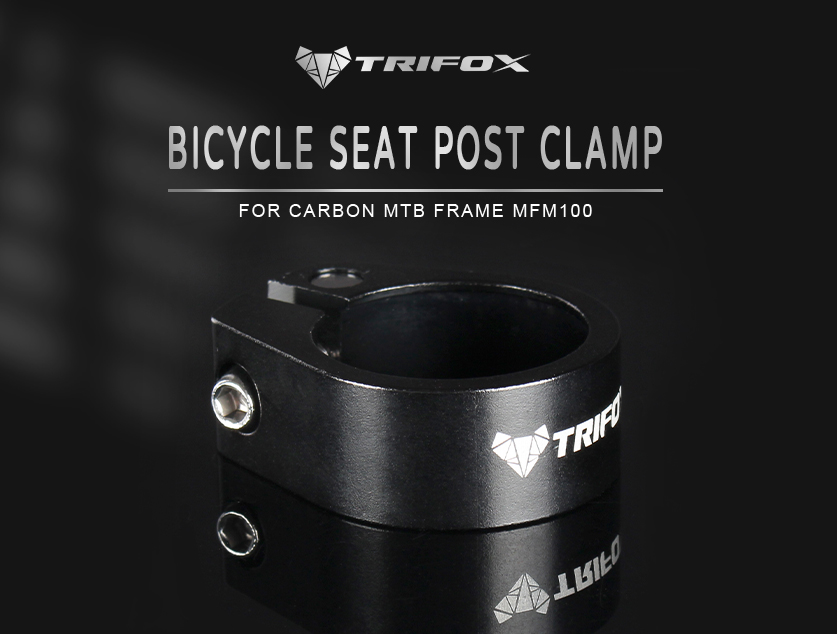
Ensure smooth, reliable saddle adjustments and protect your frame. If you're replacing a clamp or building up a bike, precise sizing is non-negotiable. For a quality, well-fitting 27.2mm seat clamp, check out the selection at Trifox Bike.
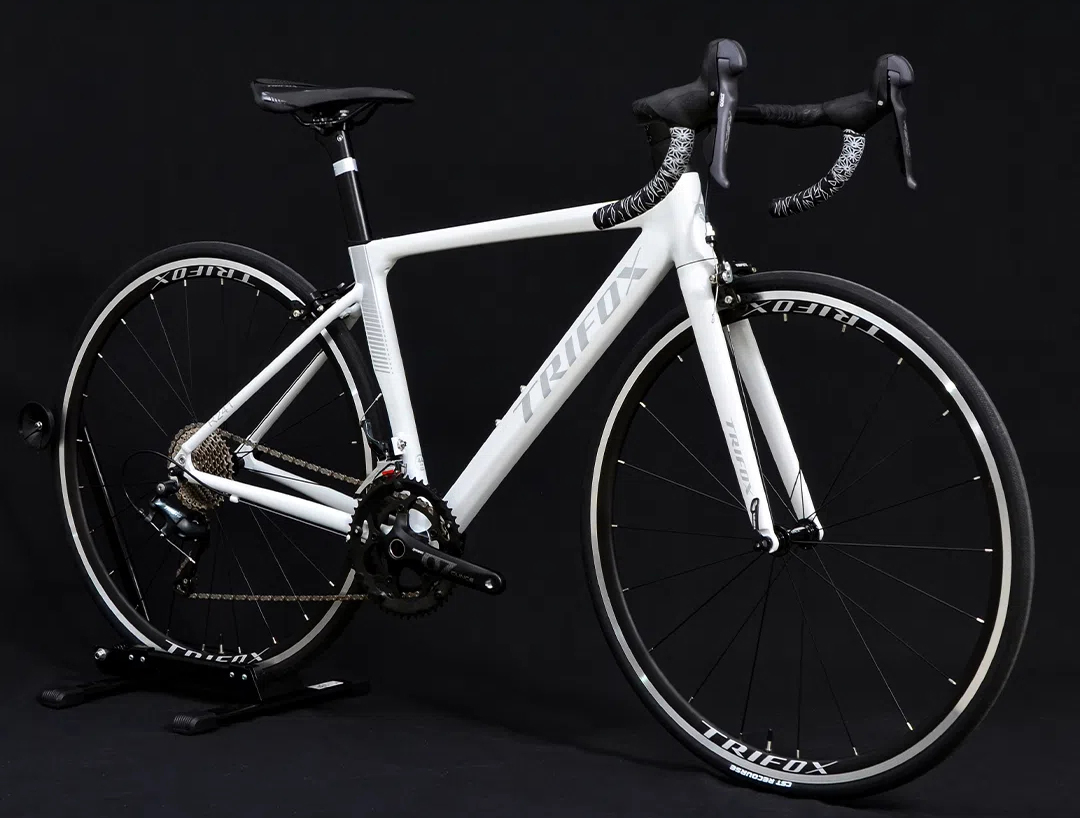
Close your eyes. Remember that first bike? Mine wasn't sleek or light. It was a clunker, a hand-me-down beast probably older than I was. Heavy steel frame, faded red paint chipped to reveal battleship grey primer underneath. Coaster brakes that screeched like a banshee if you dared pedal backwards too hard.
It had fat, knobby tires better suited for mud than pavement, and handlebars wide enough to feel like steering a bus. The seat? A vinyl-covered brick promising maximum discomfort after five minutes. It creaked, it rattled, and the chain guard was perpetually bent.
But oh, the magic. That first terrifying push off without training wheels – pure, unadulterated terror mixed with exhilarating freedom! The wobble felt catastrophic, the ground impossibly far away. Scraped knees? Guaranteed. Gravel embedded in palms? A rite of passage.
It wasn't about speed or style. It was about boundaries dissolving. Suddenly, the corner store wasn't a parental escort away. Friends' houses became independent destinations. The park felt like my kingdom. That heavy beast represented pure, unlicensed adventure. The smell of hot rubber and dusty chains, the wind (sort of) in my hair, the sheer joy of rolling downhill... it was my first taste of true autonomy. That clunky, imperfect machine wasn't just a bike; it was my first passport to freedom, grease stains and all.
What did yours look like? Maybe get your first bike at trifoxbike. Share the memory!

Does your front end feel vague or flex excessively when you really push it? That "noodle fork" sensation – steering wandering under hard cornering, brake shudder, or a general lack of precision – can be unnerving and slow you down. While some flex is inherent and even desirable for small bump compliance, excessive flex hurts control. Here's how to dial in more stiffness:
1. Increase Air Pressure (Air Forks Only): The simplest and most direct adjustment. Adding air pressure compresses the air spring more, requiring more force to initiate movement. This significantly increases the overall stiffness of the fork, especially resisting large impacts and big compressions that cause flex. Crucially: Stay within the manufacturer's recommended maximum pressure (usually printed on the fork leg). Exceeding it risks seal failure or even catastrophic damage. Start with 5-10 PSI increases, test ride, and repeat cautiously.
2. Add Volume Spacers (Air Forks Only): These small plastic tokens fit inside the air spring chamber. They reduce the air volume. Why does this help stiffness? With less volume, the air pressure ramps up much more aggressively deeper into the fork's travel. This primarily increases mid-to-end stroke support. While not directly stiffening the initial feel like pure pressure, it combats the deep dive that often feels like flex under heavy braking or big G-outs, making the fork feel more supportive and planted overall.
3. Adjust Compression Damping:
- Low-Speed Compression (LSC): Found on most mid-to-high-end forks. This controls the fork's resistance to slow, deliberate movements like braking, cornering, and pedaling forces. Increasing LSC adds significant resistance to these forces, directly combating brake dive and the flex/wander feeling during hard cornering. Turn the dial clockwise (usually) a click or two at a time and test.
- High-Speed Compression (HSC): Less common, controls resistance to sharp, fast impacts (rocks, roots). While primarily for tuning big-hit harshness, a slight increase might offer a subtle perception of firmness, but focus on LSC first for stiffness related to steering inputs.
4. Increase Oil Viscosity (Advanced): Fork oil lubricates and dampens. Thicker oil (higher viscosity, e.g., going from 5wt to 7.5wt or 10wt) creates more resistance inside the damper. This makes the damper cartridge stiffer, particularly the compression circuit, requiring more force to move the fork quickly. This is an advanced modification. Research your specific fork model thoroughly – using oil that's too thick can damage internals, make the fork harsh, and void warranties. Best done during a full service.
5. Service Your Fork: Worn bushings, contaminated oil, or degraded seals introduce slop and reduce the fork's ability to move smoothly in its intended path. This often manifests as play or a vague, "sticky" flex feeling. A full lower leg service (replacing oil, seals, and bushings if needed) restores the fork's tightness and responsiveness, eliminating unwanted movement that feels like flex.
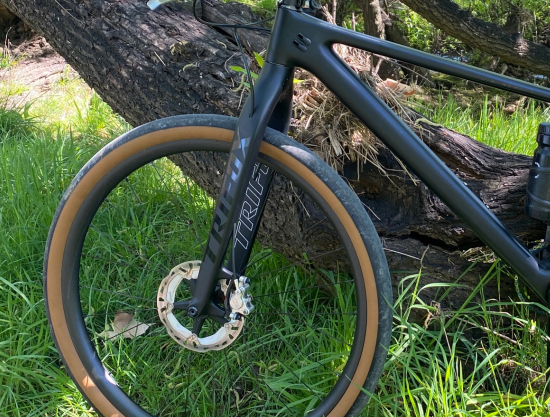
Important Considerations:
- Trial & Error: Stiffness preferences are personal. Make one change at a time and test thoroughly on familiar terrain.
- Trade-offs: Increasing stiffness almost always reduces small-bump sensitivity and plushness. Find the right balance for your riding style and terrain.
- Fork Limits: Every fork has a design stiffness. Aggressive riders on lightweight XC forks will hit limits faster than someone on a burly enduro fork. If you've maxed out adjustments and servicing, a stiffer chassis might be the ultimate solution.
- Headset Check: Ensure your headset is properly preloaded. A loose headset feels like fork flex!
By methodically working through these adjustments – starting with air pressure/volume and compression damping – you can significantly reduce unwanted flex and gain the precise, confident front end your aggressive riding demands.
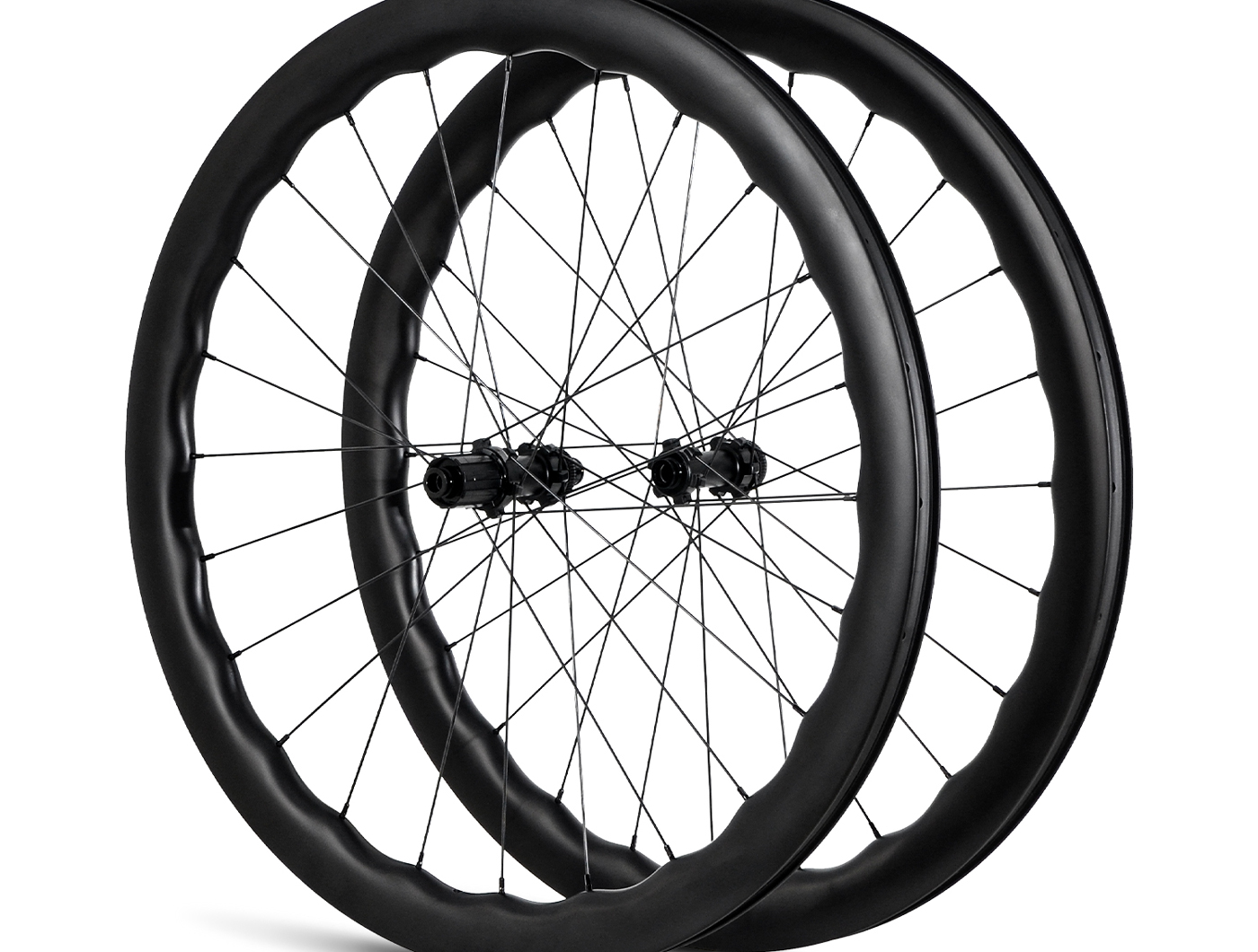
Upgrading to carbon wheels is a significant investment, but the performance gains are often transformative, not just incremental. Here’s how they change your ride:
1. Weight Savings = Acceleration & Climbing Magic:
Rotational Weight Matters Most: Shedding weight from the wheels (especially the rim) makes a HUGE difference. Lighter rims accelerate faster and climb easier because you're spinning mass, not just carrying it. You feel this instantly when sprinting or attacking hills.
2. Stiffness = Precision & Power Transfer:
Lateral Rigidity: Carbon rims resist flex under hard pedaling and cornering forces. This translates to:
Sharper steering response.
More direct power transfer (less energy lost to flex).
Increased confidence railing corners and pumping terrain.
3. Aerodynamics = Free Speed (Especially Cruising):
Smoother Airflow: Well-designed carbon rims slice through the air more efficiently than boxy aluminum counterparts. This reduces drag noticeably at sustained speeds above ~18-20mph, saving watts on flats and rolling terrain.
4. Vibration Damping = Smoother Ride & Reduced Fatigue:
Material Properties: High-quality carbon layups can absorb high-frequency trail buzz better than aluminum. This reduces hand, arm, and body fatigue on long, rough rides, improving comfort and control.
5. Strength & Durability (When Done Right):
Modern Engineering: Contrary to myths, properly built carbon wheels (from Trifox brands) are incredibly strong and impact-resistant. They excel at handling sharp hits and offer excellent fatigue resistance compared to aluminum.
The Caveats:
Braking Performance: Requires specific resin brake pads and proper bedding-in. Wet-weather performance can still lag slightly behind top aluminum.
Impact Sensitivity: While strong, massive, square-edge hits can cause damage aluminum might dent instead. Ride style and terrain matter.
Diminishing Returns for Casual Riders: The gains are most pronounced for fit, experienced riders pushing their bikes.
Who Feels the Biggest Difference?
- Climbers & Accelerators: Feel the weight savings instantly.
- Aggressive Trail/Enduro/DH Riders: Appreciate the stiffness and damping on rough descents.
- XC & Gravel Racers: Benefit from weight, aero, and stiffness efficiency.
- Riders Seeking "Ride Feel": The damped, lively, precise sensation is unique.
Carbon wheels make a substantial, multi-faceted difference. They are lighter, stiffer, often more aerodynamic, and can provide a smoother, more controlled ride. While expensive, they deliver tangible performance benefits that significantly alter how the bike feels, accelerates, climbs, and handles. For riders prioritizing performance and willing to invest, the upgrade is often considered one of the most impactful you can make.
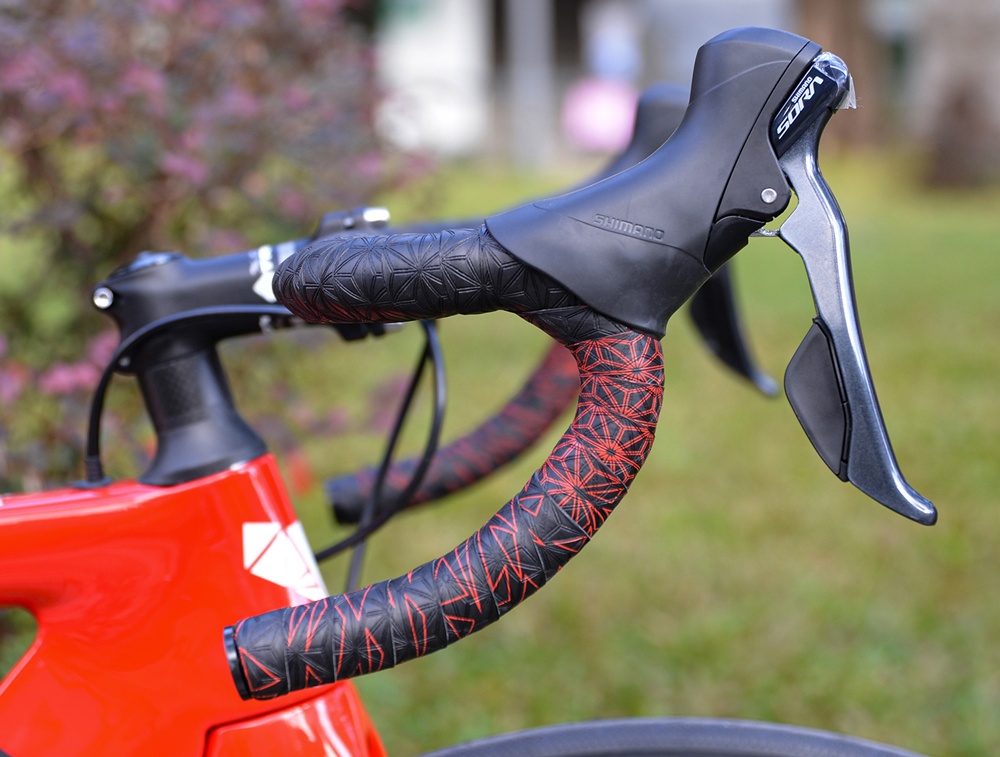
Mounting tape – often double-sided foam tape or specific adhesive pads like 3M VHB – is the unsung hero of clean, secure, and vibration-resistant bike accessory installation. Forget messy zip ties rattling loose or bulky clamps slipping. Here’s why it's essential:
The Core Purpose: Secure, Vibration-Proof Bonding
Its primary job is to create a strong, permanent bond between accessories (lights, computers, bags, sensors) and your bike frame, handlebars, or helmet, while damping damaging vibrations.
Why It Matters for Bikes:
1. Vibration Damping: Foam tapes absorb trail chatter and bumps. This protects sensitive electronics (like bike computers, lights, action cameras) from internal damage caused by constant shaking. Zip ties alone transmit vibrations directly.
2. Rock-Solid Hold: High-quality mounting tape (e.g., 3M VHB) forms an incredibly strong adhesive bond when applied correctly to clean surfaces. It resists shear forces and won’t gradually loosen like straps or ties over rough terrain.
3. Clean, Low-Profile Look: Eliminates bulky clamps, straps, and zip tie tails. Provides a sleek, aerodynamic mounting solution, especially important for computers and lights.
4. Versatile Mounting: Works on curved surfaces (handlebars, seatposts, forks, helmets) and irregular shapes where clamps struggle. Enables precise positioning.
5. Water & Weather Resistance: Good quality tapes resist moisture, dirt, and UV degradation, maintaining their hold through all conditions.
Common Bike Uses:
- Cycling Computers: Securing the mount base to the stem or handlebars.
- Lights: Attaching front/rear light mounts to handlebars, seatposts, or helmets.
- Action Cameras: Mounting GoPro-style adhesive bases to helmets, frames, or handlebars.
- GPS Trackers: Discreetly attaching under saddles or within frames.
- Mini Pumps/Tools: Securing frame-mounted holders.
- Top Tube Bags: Adhering the base plate to the top tube (often combined with straps).
Key Considerations for Success:
1. Surface Prep is CRITICAL: Clean both surfaces thoroughly with isopropyl alcohol. Grease, dirt, or wax prevents adhesion.
2. Pressure Matters: Apply firm, even pressure for 30-60 seconds after placement to activate the adhesive bond.
3. Curing Time: Allow 24-72 hours for the bond to reach full strength before stressing it heavily (e.g., big rides).
4. Choose the Right Tape: Use tapes specifically designed for outdoor, high-vibration use (like Trifox). Avoid weak, thin tapes.
5. Removal: Can be difficult. Use dental floss or a plastic trim tool to slowly saw through the adhesive. Heat (hairdryer) can soften it. Residue requires adhesive removers.
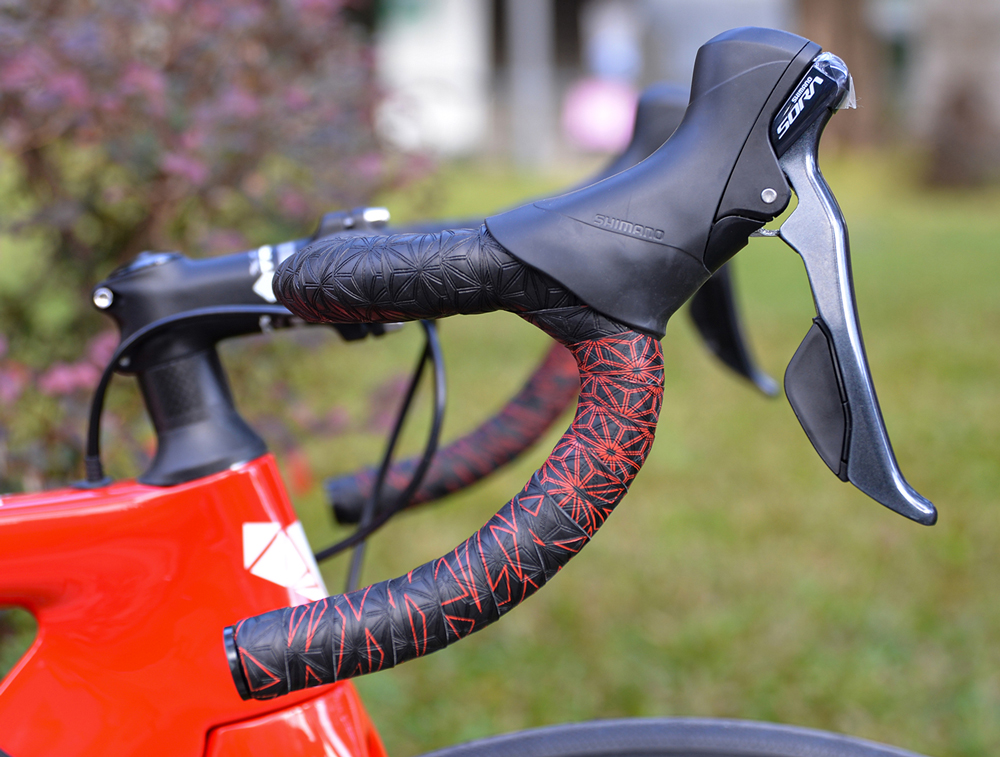
The Verdict:
Mounting tape provides a vibration-damping, ultra-secure, and clean solution for attaching essential gear to your bike. When used correctly on properly prepped surfaces, it’s vastly superior to zip ties or loose clamps for protecting electronics and keeping accessories firmly in place mile after bumpy mile. It’s a simple tool with a powerful purpose!


























































